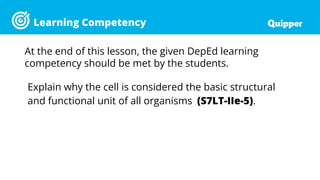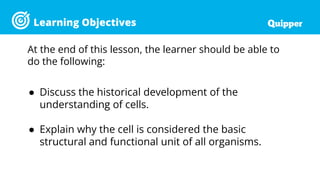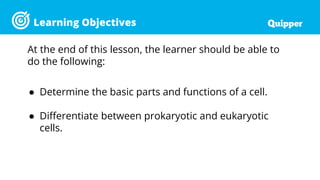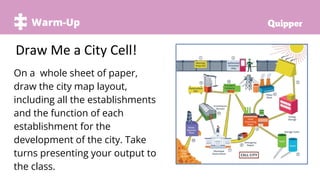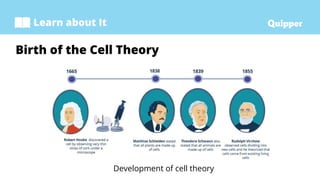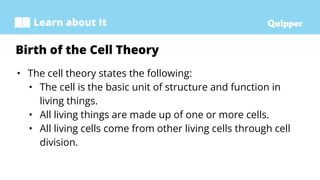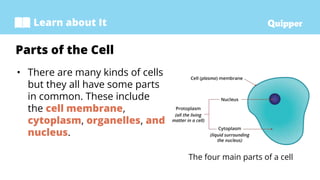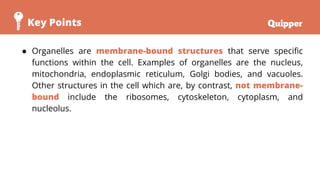The document discusses the cell as the basic structural and functional unit of life. It covers the historical discovery of cells in the 17th century and development of the cell theory. The key parts of cells are also summarized, including the cell membrane, cytoplasm, organelles, and nucleus. The document emphasizes that the cell is the smallest unit able to perform life functions and maintains an optimal surface area to volume ratio for transport of materials.


